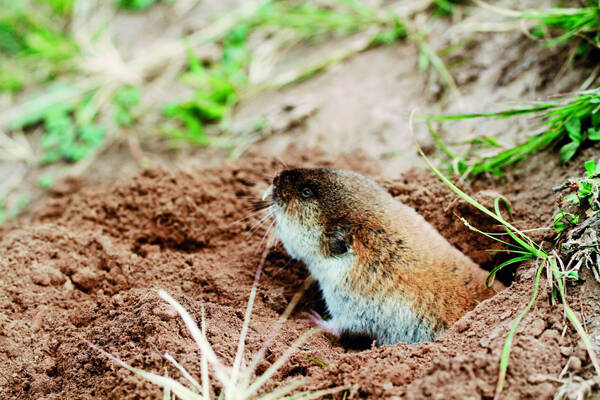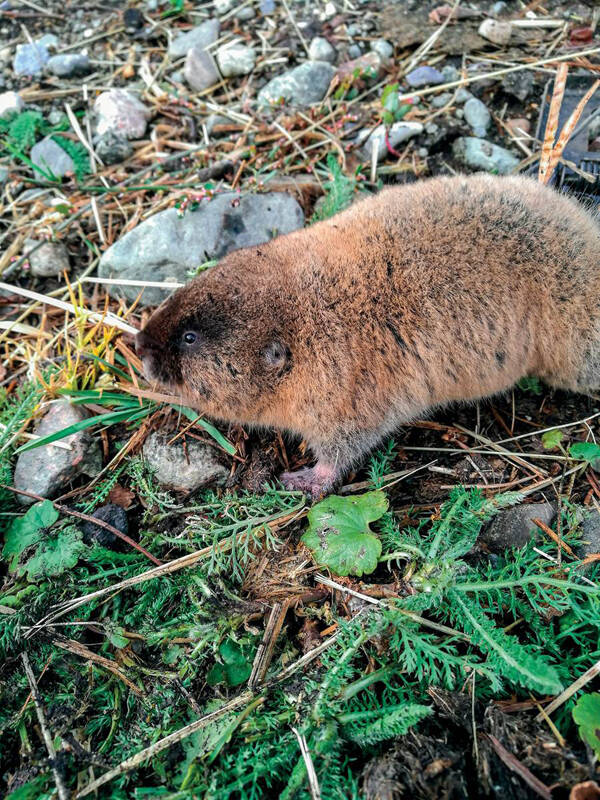Ellobius talpinus
IUCN
LCBasic Information
Scientific classification
- name:Ellobius talpinus
- Scientific Name:Ellobius tancrei,Ellobius talpinus,Flip rat, ground rat, blind rat, arch rat
- Outline:Rodents
- Family:Rodentia Cricetidae M.Vole
Vital signs
- length:110-135mm
- Weight:
- lifetime:
Feature
It is a species highly adapted to underground life.
Distribution and Habitat
In China, it is distributed in Xinjiang, Inner Mongolia, Shaanxi and Gansu. Abroad, it is distributed in Mongolia, Turkmenistan, Kazakhstan and Uzbekistan.
Mole voles are a warm and dry species widely distributed in central Asia. The habitat is relatively wide, ranging from high mountains to deserts, forest meadows and shrubs. The density is higher in places with soft and deep soil and abundant vegetation, and desert oases are also common habitats. In farmland, it avoids humid environments. The number is rare in rocky bare land in hilly mountains, sunny slopes and sandy areas with sparse vegetation in deserts.
Appearance
It is shaped like a mole and is similar in size to a vole, with a total length of about 100 mm. It has a series of morphological structures adapted to life in underground tunnels. The forehead to the area around the eyes and the sides of the snout are black, and the rest of the body is yellowish brown. It is characterized by the white outer surface of the incisors, which are large and long and tilted forward, making them appear very large. These are different from other vole species. The fur is dense and thick, like fluff, and has strong warmth retention. The eyes are very small, and the ears are degenerate, hidden in the fur and cannot be seen from the outside. The backs of the front and back feet are white. The claws are large and suitable for digging. The tail is very short, smaller than the length of the hind feet. The bones are thick and strong, and the palatine bones are typical of voles. The rear edge forms a longitudinal ridge and is connected to the pterygoid bone. There is a
Details
Mole voles belong to the subfamily Arvicolinae. There are 5 species in the world and only 1 species in China. The species-level classification status is stable, and the subspecies are very differentiated. China has 3 subspecies recorded. It is a typical grassland underground rodent. It hardly moves on the ground. Its burrows are longer than 20mm and the deepest can reach 80cm. Its burrows form a series of mounds with a diameter of about 15cm and a height of about 10cm on the grassland, which are very similar to the mounds of mole mice, but smaller than those of mole mice.

Mole voles are herbivorous. They mainly feed on plant roots, and like to eat fat axial roots and underground stems. They also eat a small amount of plant stems, leaves and seeds. Wild wheat ears, windproof, and bupleurum roots have been found in cave warehouses.
They live in groups underground. The structure of the cave system is complex. The tunnels are divided into the main tunnel, bulldozer tunnel, and feeding tunnel. The main tunnel is the trunk of the cave system, parallel to the ground, 15 to 20 cm deep, and winding. The four walls are smooth. The main tunnel is long, ranging from more than 10 meters to nearly 100 meters. The main tunnel is shorter in areas with lush vegetation and many underground rhizomes, and longer in areas with lush vegetation. The bulldozer tunnel is a tunnel where mole voles throw waste soil to the ground. It is located on both sides of the main tunnel. There is no certain rule between the distances, and the distance between the mounds is also not fixed. The expelled soil accumulates on the ground to form a mound. The volume of the mound is smaller than that of the mole mound, with a diameter of 15 to 20 cm and a height of 10 to 15 cm. The feeding tunnel is mostly located between the main tunnel and the bulldozer tunnel. It is conical in shape, with the top close to the ground. It is a tunnel formed by feeding. The lower layer of the main tunnel is the habitat cave, which is inclined to the depth. There are nests, warehouses, and feces holes in it. The nest is padded with two layers of grass, the outer layer is coarse and the inner layer is soft. There are 1 to 3 warehouses.

Mole voles are common rodents in deserts and desert grasslands in northwestern provinces of my country, and are widely distributed in arid areas in northern my country. They mainly move underground and rarely come to the ground. In spring and summer, digging activities are more frequent before 10 am and after 6 pm, and in autumn, new arched mounds can be seen all day long.
Mole voles can reproduce twice a year, with 2 to 8 pups per litter, 4 on average. The first litter of pups appears in large numbers in June, and the second litter is produced in August, the number of which is often lower than the previous one. The sex ratio is about 1:0.93, with more females than males in general, but female mice participating in reproduction only account for 51% of adult female mice, indicating that their reproductive capacity is weak.

Mole voles gnaw plant roots and dig tunnels underground all year round, causing great harm to agriculture and animal husbandry. In farmland, they bite off the roots of crops, reducing grain production. They may also be carriers of plague bacteria.
This species is listed in the 2013 IUCN Red List of Threatened Species Ver3.1—Vulnerable (VU).
It has been included in the "National List of Terrestrial Wildlife with Important Economic and Scientific Research Value" issued by the State Forestry Administration of China on August 1, 2000.








